You may have encountered the acronyms “ATF” and “EFT” if you’re seeking a method to manage your finances and invest your money. In recent years, these two investment vehicles have gained in popularity, but many individuals are still unfamiliar with their nature and operation.
ATF, or actively managed mutual funds, are investment funds managed by professional fund managers who decide whether stocks, bonds, or other securities to purchase or sell in order to meet the fund’s investment objectives. These funds feature higher expenses than conventional investment options, but the potential for greater rewards.
Exchange-traded funds, on the other hand, are funds that are exchanged on stock exchanges like individual equities. They offer lower costs than actively managed mutual funds and are often meant to mimic a certain index, such as the S&P 500. In addition, they can be traded throughout the trading day, unlike mutual funds, which can only be purchased or sold at the conclusion of the trading day.
Both exchange-traded funds (ETFs) and exchange-traded notes (ETNs) have their own pros and disadvantages, and the choice between them depends on your unique investing objectives and risk tolerance.
Understanding the Electronic Firearms Transfer (EFT) File Process and How it Works:
The Bureau of Alcohol, Tobacco, Firearms, and Explosives (ATF) uses the Electronic Firearms Transfer (EFT) file process to make it easier for Federal Firearms Licensees (FFLs) in the United States to trade guns with each other. The EFT process lets FFLs transfer firearms electronically, which is faster, more accurate, and less likely to make mistakes than the old paper-based process.
The transfer or FFL (the FFL that currently has the gun) starts the EFT process by making an electronic record of the transfer. This record includes information like the buyer’s name, address, and the results of a background check. The transferor FFL then sends the electronic record to the ATF’s eForms system, which processes the information and creates an electronic Form 3.
The Form 3 is then sent to the transferee FFL (the FFL that will get the gun) and the ATF’s National Firearms Act (NFA) Branch for review and approval. Once the NFA Branch approves the transfer, the transferee FFL is notified and can then take possession of the gun.
The EFT process also has a system of automated validations and error checks to make sure that all of the required information is correct and complete. This helps keep the transfer process from going wrong or taking too long.
The Significance of ATF Fingerprinting in Firearm Regulations and What it Means for Gun Owners:
Fingerprinting by the Bureau of Firearms and Explosives (ATF) is an integral part of weapons restrictions in the United States. Those who desire to become certified dealers or manufacturers of firearms, as well as those who wish to transfer weaponry subject to the National Firearms Act (NFA), such as machine guns, suppressors, and short-barreled rifles, are required to obtain this licence.
The ATF fingerprinting procedure requires the submission of fingerprints to the FBI for a background check. The goal of this background check is to guarantee that the applicant does not have a criminal record that would disqualify them from possessing or dealing in guns.
Gun owners may not be directly affected by the ATF fingerprinting requirement unless they want to become licensed dealers, manufacturers, or wish to transfer NFA firearms. Yet, the legislation has a greater impact on the weapons industry as a whole, as it helps to guarantee that those who sell or manufacture firearms adhere to a high standard of legal and ethical behavior.
Also, the ATF fingerprinting requirement prevents persons with criminal records or other disqualifying characteristics from illegally obtaining firearms. This contributes to public safety by ensuring that only responsible, law-abiding persons possess firearms.
The Cost of ATF Fingerprinting and EFT file and How to Budget for it:
The cost of ATF fingerprints and EFT files fluctuates based on the required services and location where they are performed. The average cost for ATF fingerprinting is between $20 to $100 per set of fingerprints, which includes the fee for the FBI background check. With EFT files, the FFLs engaged in the transfer may assess fees in addition to any applicable taxes or processing costs assessed by the ATF.
To account for these expenditures in a budget, it is essential to investigate the precise requirements for the required services and to seek quotes from trustworthy service providers. Those who seek to become licenced guns dealers or manufacturers, for instance, should investigate the precise requirements for ATF fingerprinting and receive quotations from authorised service providers. Likewise, people who intend to transfer firearms subject to the NFA should investigate the fees charged by the FFLs engaged in the transfer, as well as any applicable ATF fees.
While budgeting for ATF fingerprints and EFT files, it is also crucial to account travel charges, shipping fees, and any other related costs. People must also be willing to pay any fees or charges in advance, and they must be informed of any refund policies or other terms and conditions associated with the services.
Budgeting for ATF fingerprints and EFT files involves extensive research and meticulous planning to account for all fees and expenses. By doing so, individuals may ensure that they can acquire the necessary services in a timely and cost-effective manner while adhering to all rules and regulations.
Conclusion:
In conclusion, Electronic Firearms Transfer (EFT) file processing and ATF fingerprinting are crucial parts of U.S. weapons rules. The EFT process simplifies the transfer of guns between Federal Firearms Licensees (FFLs) by reducing errors and processing delays through the use of electronic records and automated validations. Those who desire to become registered guns dealers or manufacturers, as well as those who wish to transfer firearms pursuant to the National Firearms Act, are required to undergo the ATF’s fingerprinting procedure (NFA). Despite the fact that the costs of these services can vary based on unique needs and region, it is essential to account for them in the budget to ensure compliance with applicable rules and regulations. Ultimately, these rules play a crucial role in maintaining public safety by ensuring that only responsible, law-abiding individuals possess firearms.


